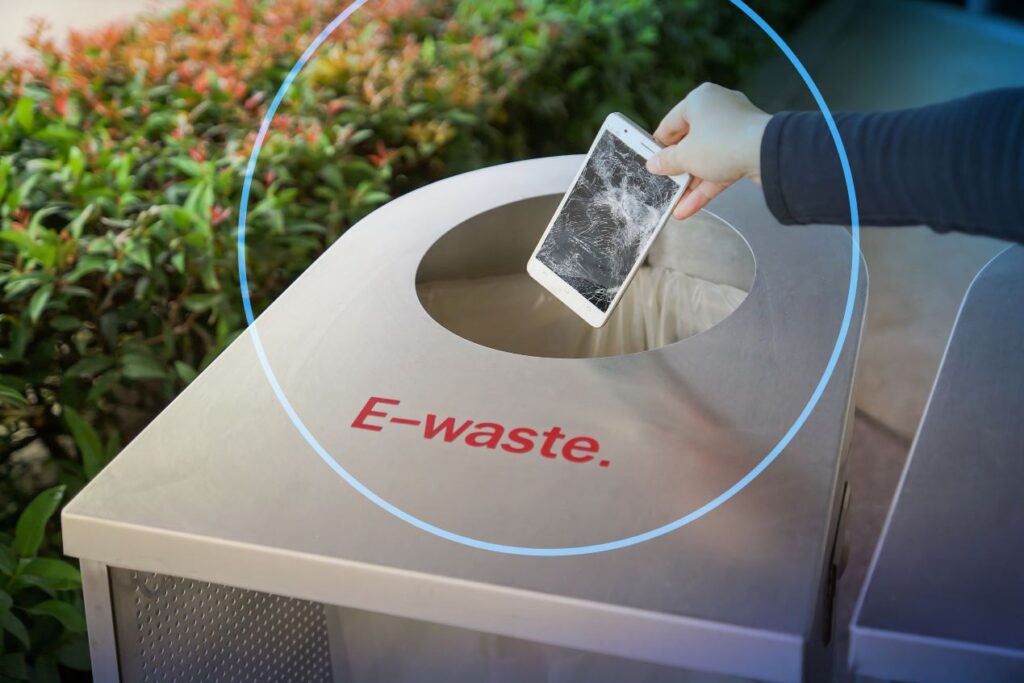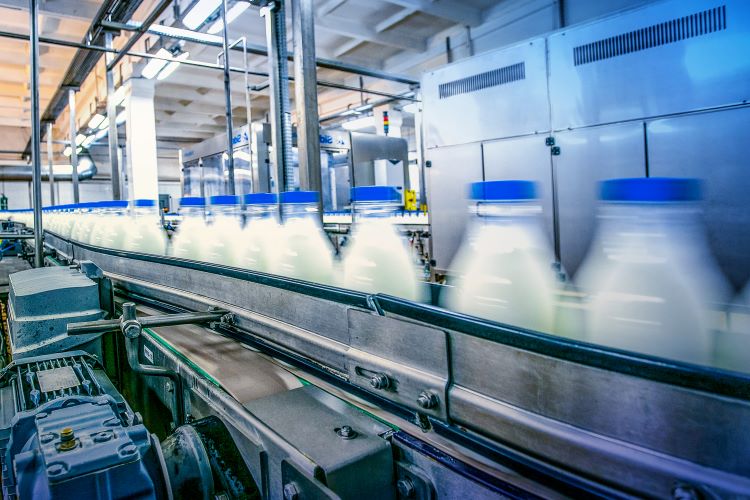The circular economy promises to change the very way we design, produce and consume products. It’s not just a local solution, but a global movement, widely recognized as a practical and effective way of building a sustainable future and reversing the tide on global warming. By stopping waste and pollution from being created in the first place, slowing down the use of precious natural resources and actively regenerating nature, the circular economy is a collective effort to protect our planet.
What is a circular economy?
A circular economy is an economic system aimed at eliminating waste and the continual use of resources. It involves reusing, refurbishing, and recycling materials and products to create a closed-loop system, minimizing the use of raw materials and reducing waste and pollution. From preserving raw materials and reducing waste to improving our health and creating new job opportunities, the circular economy benefits our world in multiple ways.
The opposite of the take-make-waste linear model that our economy relies on today, circularity is about making the most of what we already have and ensuring that all products and materials are maintained, reused, refurbished, remanufactured, recycled and composted so they never end up as waste.
How can businesses benefit from a circular economy?
Companies from Coca-Cola to Renault have begun to realize circular economy benefits within their own operations to make better use of their resources and address what happens to their products once they’ve fulfilled their intended function. We’re seeing them make the switch to 100% recyclable plastic packaging and set up factories that repair rather than write off damaged cars.
As circularity continues to make inroads into our economy and moves beyond the proof-of-concept stage to real-life applications, policy makers are now looking into how to make the circular economy a reality on a much bigger, global scale. With this in mind, let’s look at 10 key circular economy benefits and why they’re so important for our future.
10 Circular Economy Benefits
1. Positive impact on the environment
The circular economy’s three main principles – eliminate waste, circulate materials and regenerate nature – all aim to reverse biodiversity loss. Stopping the torrent of waste we produce today from heading to landfills or being dumped in the ocean will drastically reduce pollution levels and greenhouse gas emissions, helping to slow down the effects of climate change and provide a new opportunity for natural ecosystems to thrive.
Today, the circular economy is recognized by policy makers as an integral part of their sustainability plans to protect our natural world and build a carbon-neutral future.
“Fighting global warming and environmental crises are the most urgent challenges of our time. Strengthening the circular economy is one of the most powerful tools in our arsenal.”
Dr Werner Hoyer, President, European Investment Bank
2. Protect and preserve raw materials
If we continue using the Earth’s resources as we do today, by 2050, we will need the resources of three planets. This stark warning from the United Nations highlights just how much we depend on the extraction of raw materials and finite resources from the Earth.
The circular economy solves this issue by encouraging us to recycle, reuse and refurbish what we already have instead of continuing to extract more finite raw materials.
Take mobile phones. An estimated 5.3 billion devices go defunct every year, taking with them the valuable precious metals that make up their components. A report by the European Economic and Social Committee found that if the approximately 700 million unused devices in Europe were collected and recycled, we could recover almost 15,000 metric tons of gold, silver, copper, palladium, cobalt and lithium, worth over €1 billion ($1.2 billion USD).
3. Reduce waste and pollution
Single use plastics, electronics and packaging are just some of the everyday items we consume that are designed to be disposed of rather than reused, and typically end up in landfill. Not only is this extremely wasteful, it’s also highly polluting. According to the World Bank, landfill waste is responsible for about 11% of planet-warming methane emissions globally, not to mention polluting gasses such as carbon monoxide, nitrogen dioxide and sulfur dioxide.

Just as there is no waste in nature, shifting from a linear to circular economy involves designing out waste, so that when any product, whether it be a crisp packet or a building, reaches the end of its life, it re-enters the economy in some form or another. Apeel is another company eliminating single use shrink wrap plastics on fresh produce. They tackle food waste and pollution with the invention of edible plant-based coating.
4. Improve our health and quality of life
Did you know that air pollution is the largest environmental cause of human diseases worldwide? It’s responsible for around 6.7 million premature deaths annually. As explained by the Ellen Macarthur Foundation, a circular economy designs out the negative impacts of economic activity that cause damage to human health and natural systems. Legislation backs this up by introducing penalties for clean air violations, applying pressure for pollution levels in built-up areas to be monitored and reduced.
Addressing air pollution alone is not the only way of boosting health. The food industry, for example, is responsible for foodborne diseases, water contamination, emitting greenhouse gasses and using synthetic pesticides and preservatives. A circular economy approach within this sector alone is predicted to save 290,000 lives lost to outdoor air pollution per year by 2050.
5. Encourage recycling and practical solutions for consumers
Giving consumers practical ways to dispose of their rubbish at home is an important step to protect our environment from greenhouse gas emissions caused by non-biodegradable waste. Educating consumers on their buying choices and making recycling part of everyday culture helps to create active change.
Among proposed circular economy measures, the EU aims to optimize waste collection so that the population can recycle efficiently. By 2035, it hopes to recycle 65% of municipal waste. Manufacturers are also being encouraged to do their part and make it easier for consumers to dispose of products and packaging correctly, and extend the lifecycle of things they already own by getting them repaired or refurbished. New right to repair legislation will drive this by making it easier for consumers to access repair and maintenance information and services.
6. Improve brand reputation
Consumers are increasingly concerned about making sure they buy eco-friendly products and engage with brands they perceive as being environmentally and socially responsible. One report found that 81% of consumers prefer to purchase from sustainable brands. In another, more than 60% of shoppers said they’d pay more for a product with sustainable packaging.

To earn customers’ loyalty, companies are responding by developing more environmentally friendly products and using creative packaging solutions, such as fully recyclable paperboard coffee cup lids and protective cardboard filler instead of polystyrene.
7. Create new jobs and opportunities
Doing away with linear production methods in favor of reusing, repairing and remanufacturing is expected to generate up to eight million new jobs worldwide — one of the major circular economy benefits we can’t overlook.
With over a third of consumers happy to pay extra for a more durable or longer lasting product that can be repaired easily, businesses have an opportunity to expand the services side of their business, and make available jobs around refurbishing goods, recycling and innovation for sustainable design.
8. Breakthroughs in sustainable production
Creating greener products not only means using sustainable resources but also producing them in an environmentally friendly manner. It requires manufacturers to use better materials, achieve transparency across their supply chain, actively reduce waste and power their production processes with renewable energy.
One company leading the way is car manufacturer Renault, which has set up one of the world’s first circular economy factories, called the Refactory, focused on extending the lifecycle of car parts and damaged vehicles. The plant intends to be entirely carbon neutral by 2030. It also houses a workshop that refurbishes robots before they return to production lines.
9. Boost eco-design practices
It’s estimated that around 80% of a product’s environmental impact is determined as early as the design phase. That’s why manufacturers are being asked to adopt an eco-design mindset where they consider sustainability from the very onset of developing a new product, exploring everything from environmentally friendly materials to energy-efficient manufacturing processes.
Eco-design also addresses how every component they make can later be dismantled, recycled, reassembled and upgraded to give it a new lease of life. We call this designing for disassembly and it’s just one way that companies can reduce waste, repurpose extracted materials and decarbonize their value chain.
Phone maker Nokia is one example of a company that’s embraced an eco-design approach. The Nokia G22 repairable smartphone has been designed to last as long as possible. By making available spare parts and guides, Nokia is tackling common smartphone issues like screen damage, battery problems and charging port faults, helping owners to easily and cost effectively fix these parts themselves.
10. Rethink traditional business models through remanufacturing
As the focus shifts from consuming products to keeping them in circulation, businesses are moving away from product-centric business models to new service-centric ones such as equipment as a service (EaaS). Through EaaS, manufacturers no longer just produce and sell assets, they deliver them as part of a package covering maintenance, monitoring and optimization services. They will use the latest digital capabilities such as virtual twins to simulate every aspect of a product or machine before physically making it, and then use that same digital record to manage it throughout its entire lifecycle.
Other rising circular economy business models include sharing concepts, where idle assets are made available to other users. This could be everything from household appliances to industrial equipment such as robots, conveyor belts and forklifts. According to the World Economic Forum, emerging business models, growing political support and societal pressure will mean that by the 2030s, the circular economy will not just be the mainstream economy, it will be the only economy.
Transforming our system
In recognizing the need for a circular economy in manufacturing, design, distribution, Dassault Systèmes developed the 3DEXPERIENCE. This platform is helping designers, manufacturers, and supply chain operators consider the broader scope of the circular economy. This company remains committed to waste reduction, innovative design, and improved development practices in a sustainable era.

